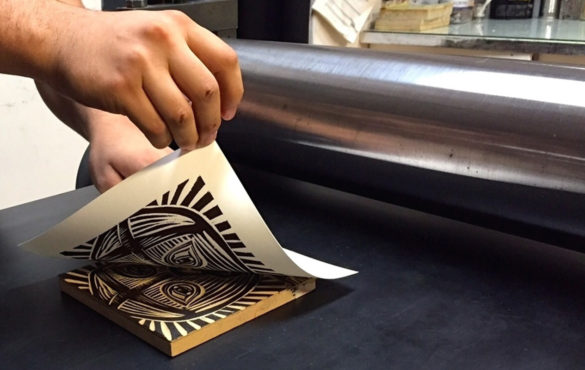
In the world of printing, there are various techniques that have evolved over time, each with its own unique advantages and applications. One such technique that has stood the test of time is relief printing. In this blog post, we will delve into the fascinating world of relief printing, exploring its history, process, and diverse applications. So, let's embark on this journey to discover how relief printing is used and why it continues to be a valuable tool in the modern era.
- Understanding Relief Printing:
Relief printing is a traditional printing method that involves carving a design or image onto a surface, typically a block of wood or linoleum. The raised areas of the block, which remain after carving, are then inked and pressed onto paper or other materials to create a print. This technique allows for precise reproduction of intricate details and textures, making it a preferred choice for artists, illustrators, and printmakers. - Historical Significance:
Relief printing has a rich history that dates back centuries. It originated in ancient China and was later adopted by cultures around the world. One of the most notable examples is the woodblock printing technique used in ancient Chinese bookmaking, which played a pivotal role in disseminating knowledge and culture. Over time, relief printing techniques evolved, leading to advancements such as movable type printing, which revolutionized the printing industry. - Applications in Art and Design:
Relief printing offers artists and designers a versatile medium to express their creativity. Its ability to capture intricate details and textures makes it ideal for creating stunning prints, illustrations, and even three-dimensional artworks. From traditional woodcuts to contemporary linocuts, relief printing continues to inspire artists across various disciplines. - Commercial and Industrial Applications:
Beyond the realm of art, relief printing finds practical applications in commercial and industrial settings. Its ability to produce high-quality prints with consistent results makes it a valuable tool for mass production of packaging materials, labels, and even textiles. Additionally, relief printing is often used in the production of stamps, currency, and security documents due to its ability to create intricate patterns and designs. - Advancements in Relief Printing:
With the advent of digital technology, relief printing has undergone significant advancements. Digital relief printing techniques combine traditional carving methods with computer-aided design, allowing for greater precision and efficiency. This fusion of traditional craftsmanship and modern technology has opened up new possibilities for relief printing, making it more accessible and adaptable to contemporary needs.
Conclusion:
Relief printing continues to be a powerful and versatile printing technique, bridging the gap between traditional craftsmanship and modern innovation. Its rich history, diverse applications, and ongoing advancements make it an invaluable tool for artists, designers, and industries alike. Whether it's creating stunning artworks or producing mass prints, relief printing remains a testament to the enduring power of printmaking.



